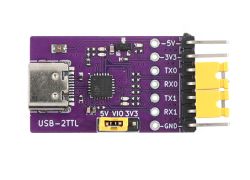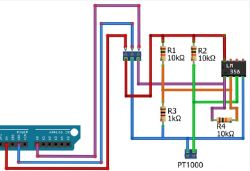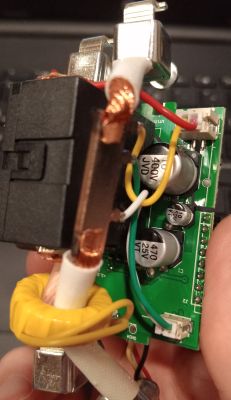Brand: Energizer
Model: Energizer Outdoor Smart Plug
Model Number: EOX3-1002-ME1
Purchased From: Menards (Home Improvement Store in United States)
Description: Black Outdoor (IP65 Rated) Two Outlet 15A Smart Plug
I bought this initially as an experiment to see if I could flash another ESP device serially -- the device was on clearance for more than 30% off at my local hardware store. I had success pulling down a EOX3-1001-BLK from ebay and flashing it with Tasmota using tuya-convert in early 2022, but I wanted a bit more of a challenge this time.
I figured I would be able to buy the device, look up the FCC ID to look at the teardown pictures (thank you FCC for getting the hard part done for me!), and depending on the chipset flash it to Tasmota (or just return it if it was some arcane hardware).
Opening up the box, I found the following ID: FCC ID: 2A3ZO-ETS-C-020. (Bizarrely in the photo below, its given a model number of EOX3-1002-BLK? which matches a more widely sold, but very different appearing Energizer product).
Running to https://www.fcc.gov/oet/ea/fccid, punched it in and took a look at the disassembly pictures (repeated here for your convience):
Most interestingly, the final picture hit me with disappointment -- no ESP. It showed a chipset I was unfamiliar with (I am a Noob in this space): BEKEN BK7231N.
Before I threw in the towel, a quick google took me to OpenBK7231T_App: https://github.com/openshwprojects/OpenBK7231T_App and subsequently tuya-cloudcutter: https://github.com/tuya-cloudcutter/tuya-cloudcutter. My hopes were up that I could still get complete control of this plug.
With the knowledge from my Tasmota flashing experience in early 2022, I knew that the Energizer smart products in the USA were really Tuya devices with a brand name and fancy box. If this was still the case, I could try to pair the device with tuya home app to confirm the plug was just a re-branded tuya device and thus and might be susceptible to the tuya-cloudcutter OTA approach. Sure enough, it paired via the manual process in AP mode!
While in the Tuya App, I recorded the firmware version from the tuya app: 1.1.8. Next it was time to break out tuya-cloudcutter. Using the command line menu, I found the most similar profile in the library -- Selected Device Slug: tuya-generic-lspa7-plug, Selected Profile: oem-bk7231n-plug-1.1.8-sdk-2.3.1-40.00.
After a few attempts (Tuya AP mode is incredibly finicky), I managed to first detach the plug from Tuya Cloud, and then used the flash mode to push on OpenBeken! It would have been faster if it wasn't for some peculiarities of my Ubuntu host (blocked Port 53, old NetworkManager app).
Finally, I performed trail and error and managed to determine all of the pin assignments (using OpenBK7231_App Nomenclature):
PIN: ASSIGNMENT, CHANNEL
----------------------
P7 (PWM1): Rel, 1
P11 (TXD1): Btn, 1, 2
P24 (PWM4): Rel, 2
P26 (PWM5): WifiLED_n
I had figured with all the warnings from Tasmota, that the era of flashing store-bought devices was coming to an end. Little did I realize that the open source community was undeterred and continued on in the time tuya-convert was patched. Kudos and thanks to all the hard work by the contributors to these repositories!
Added after 20 [minutes]:
I forgot to mention that I tried digging around on Tuyas developer pages to find what BK7231N based module this was. I couldn't find one with the wifi antenna next to the pinout. I only found similar configurations with the antenna opposite the pinout.
Anyone have an idea?
Model: Energizer Outdoor Smart Plug
Model Number: EOX3-1002-ME1
Purchased From: Menards (Home Improvement Store in United States)
Description: Black Outdoor (IP65 Rated) Two Outlet 15A Smart Plug
I bought this initially as an experiment to see if I could flash another ESP device serially -- the device was on clearance for more than 30% off at my local hardware store. I had success pulling down a EOX3-1001-BLK from ebay and flashing it with Tasmota using tuya-convert in early 2022, but I wanted a bit more of a challenge this time.
I figured I would be able to buy the device, look up the FCC ID to look at the teardown pictures (thank you FCC for getting the hard part done for me!), and depending on the chipset flash it to Tasmota (or just return it if it was some arcane hardware).
Opening up the box, I found the following ID: FCC ID: 2A3ZO-ETS-C-020. (Bizarrely in the photo below, its given a model number of EOX3-1002-BLK? which matches a more widely sold, but very different appearing Energizer product).
Running to https://www.fcc.gov/oet/ea/fccid, punched it in and took a look at the disassembly pictures (repeated here for your convience):
Most interestingly, the final picture hit me with disappointment -- no ESP. It showed a chipset I was unfamiliar with (I am a Noob in this space): BEKEN BK7231N.
Before I threw in the towel, a quick google took me to OpenBK7231T_App: https://github.com/openshwprojects/OpenBK7231T_App and subsequently tuya-cloudcutter: https://github.com/tuya-cloudcutter/tuya-cloudcutter. My hopes were up that I could still get complete control of this plug.
With the knowledge from my Tasmota flashing experience in early 2022, I knew that the Energizer smart products in the USA were really Tuya devices with a brand name and fancy box. If this was still the case, I could try to pair the device with tuya home app to confirm the plug was just a re-branded tuya device and thus and might be susceptible to the tuya-cloudcutter OTA approach. Sure enough, it paired via the manual process in AP mode!
While in the Tuya App, I recorded the firmware version from the tuya app: 1.1.8. Next it was time to break out tuya-cloudcutter. Using the command line menu, I found the most similar profile in the library -- Selected Device Slug: tuya-generic-lspa7-plug, Selected Profile: oem-bk7231n-plug-1.1.8-sdk-2.3.1-40.00.
After a few attempts (Tuya AP mode is incredibly finicky), I managed to first detach the plug from Tuya Cloud, and then used the flash mode to push on OpenBeken! It would have been faster if it wasn't for some peculiarities of my Ubuntu host (blocked Port 53, old NetworkManager app).
Finally, I performed trail and error and managed to determine all of the pin assignments (using OpenBK7231_App Nomenclature):
PIN: ASSIGNMENT, CHANNEL
----------------------
P7 (PWM1): Rel, 1
P11 (TXD1): Btn, 1, 2
P24 (PWM4): Rel, 2
P26 (PWM5): WifiLED_n
I had figured with all the warnings from Tasmota, that the era of flashing store-bought devices was coming to an end. Little did I realize that the open source community was undeterred and continued on in the time tuya-convert was patched. Kudos and thanks to all the hard work by the contributors to these repositories!
Added after 20 [minutes]:
I forgot to mention that I tried digging around on Tuyas developer pages to find what BK7231N based module this was. I couldn't find one with the wifi antenna next to the pinout. I only found similar configurations with the antenna opposite the pinout.
Anyone have an idea?







![[BK7321N] Teardown/Flash of Energizer Outdoor Smart Plug - EOX3-1002-ME1 (US) [BK7321N] Teardown/Flash of Energizer Outdoor Smart Plug - EOX3-1002-ME1 (US)](https://obrazki.elektroda.pl/7500807500_1675748043_thumb.jpg)
![[BK7321N] Teardown/Flash of Energizer Outdoor Smart Plug - EOX3-1002-ME1 (US) [BK7321N] Teardown/Flash of Energizer Outdoor Smart Plug - EOX3-1002-ME1 (US)](https://obrazki.elektroda.pl/6158823200_1675748122_thumb.jpg)
![[BK7321N] Teardown/Flash of Energizer Outdoor Smart Plug - EOX3-1002-ME1 (US) [BK7321N] Teardown/Flash of Energizer Outdoor Smart Plug - EOX3-1002-ME1 (US)](https://obrazki.elektroda.pl/8444021900_1675747569_thumb.jpg)
![[BK7321N] Teardown/Flash of Energizer Outdoor Smart Plug - EOX3-1002-ME1 (US) [BK7321N] Teardown/Flash of Energizer Outdoor Smart Plug - EOX3-1002-ME1 (US)](https://obrazki.elektroda.pl/7614871300_1675747583_thumb.jpg)
![[BK7321N] Teardown/Flash of Energizer Outdoor Smart Plug - EOX3-1002-ME1 (US) [BK7321N] Teardown/Flash of Energizer Outdoor Smart Plug - EOX3-1002-ME1 (US)](https://obrazki.elektroda.pl/6649209000_1675747597_thumb.jpg)
![[BK7321N] Teardown/Flash of Energizer Outdoor Smart Plug - EOX3-1002-ME1 (US) [BK7321N] Teardown/Flash of Energizer Outdoor Smart Plug - EOX3-1002-ME1 (US)](https://obrazki.elektroda.pl/4499793100_1675747601_thumb.jpg)
![[BK7321N] Teardown/Flash of Energizer Outdoor Smart Plug - EOX3-1002-ME1 (US) [BK7321N] Teardown/Flash of Energizer Outdoor Smart Plug - EOX3-1002-ME1 (US)](https://obrazki.elektroda.pl/9469253900_1675747610_thumb.jpg)
![[BK7321N] Teardown/Flash of Energizer Outdoor Smart Plug - EOX3-1002-ME1 (US) [BK7321N] Teardown/Flash of Energizer Outdoor Smart Plug - EOX3-1002-ME1 (US)](https://obrazki.elektroda.pl/7874307400_1675747620_thumb.jpg)
![[BK7321N] Teardown/Flash of Energizer Outdoor Smart Plug - EOX3-1002-ME1 (US) [BK7321N] Teardown/Flash of Energizer Outdoor Smart Plug - EOX3-1002-ME1 (US)](https://obrazki.elektroda.pl/4196452100_1675747623_thumb.jpg)